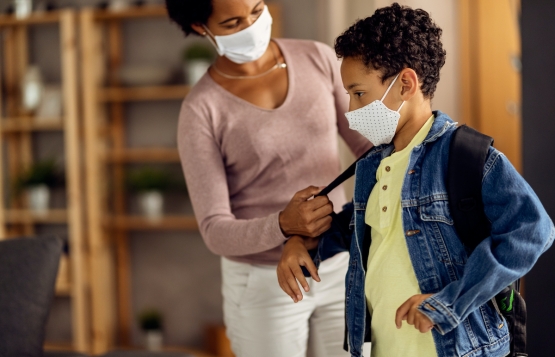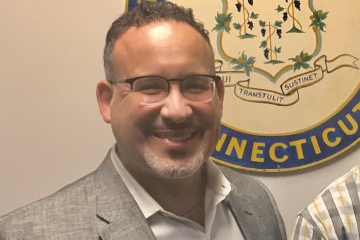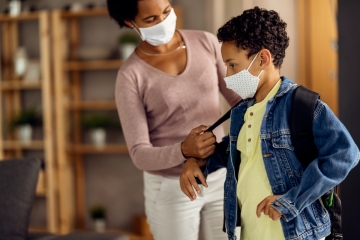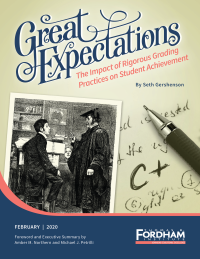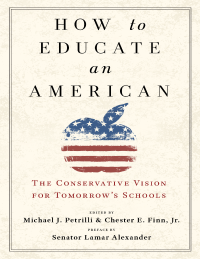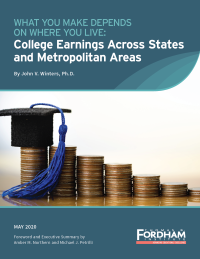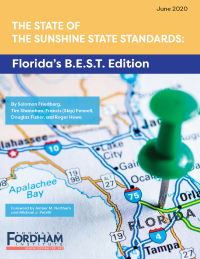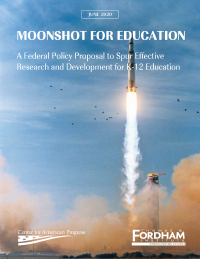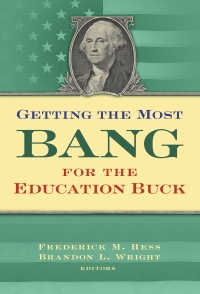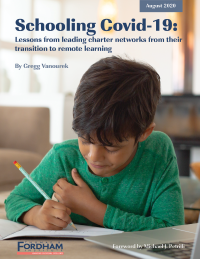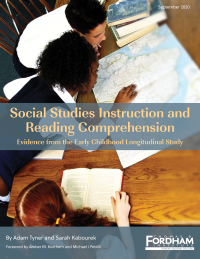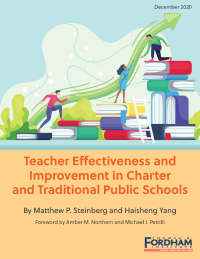As the world struggles through some of the darkest days of the pandemic, and more schools shift back to remote learning, we at the Thomas B. Fordham Institute are spending most of our time thinking about what comes next: educational recovery. Next month, we expect to announce a new initiative to crowd-source a set of evidence-based recommendations for addressing learning loss—or what some prefer to call “unfinished learning.” Whatever the label, there’s little doubt that the challenge facing educators, parents and kids, as well as policymakers, will be immense, and take years of smart, dedicated effort to address—especially for our youngest, neediest students, for whom remote learning is particularly ineffective.
The best way to help the students most effected by the disruption, we will argue, is to run fantastic schools. That means equipping talented teachers with high quality instructional materials—materials aligned to rigorous standards and reflecting high expectations—and surrounding those teachers with effective coaching, time for professional learning and collaboration, and systems that help them know whether their efforts are hitting the mark. These practices were tried and true before the pandemic, and will be so long after.
Elementary schools in particular will need to enhance their efforts to accelerate student learning, given all that our children have been through over the past year. That means identifying opportunities for extended learning time and investing in high-dosage tutoring.
To meet the moment, then, we need schools—and especially high-poverty elementary schools—to embrace evidence-based practices, emulate the efforts of the best district and charter schools, plus add a few key elements to their models to help kids make rapid gains. Let’s call that the “traditional schools on steroids” strategy. We want it to take hold, spread, and last long after the pandemic is a distant memory.
Let’s be clear, though: Such a strategy embraces a fairly conservative model. By its nature, any attempt to embrace “evidence-based” practices will be such, since true innovations are by definition untested. Most importantly, it does not seek to disrupt our longstanding practice of assigning students to grade levels based on their age, and moving virtually all kids through the grades in lock-step fashion.
But there is another strategy worth experimenting with, at least in a subset of our schools: seizing this moment to embrace a “move at your own pace” model, one that blows up the standard kindergarten-through-grade-five progression in order to give students who need it significantly more time to get back on track.
This second strategy will be the focus of a series of forthcoming blog posts. In this inaugural discussion, I will (re)state the case for it. Future posts will describe various versions of the idea, and wrestle with the logistical, pedagogical, social, and financial challenges of making them work.
—
Nine months ago, just a few weeks into the national shutdown, I argued in the Washington Post that high-poverty elementary schools should consider keeping all of their students in the same grade when they returned this fall.
The reaction was swift and nearly unanimous: Just about everyone hated the idea. Baltimore’s excellent superintendent, Sonja Sontelises, fired back in her hometown paper with an article declaring that “Baltimore educators won’t be spending one minute of time or one ounce of their brain power exploring this option, for a simple reason: It will not help children.” She pointed to studies showing disappointing results for grade-retention policies, plus the enormous costs of educating students for an additional school year. That’s fair enough, though giving all kids an extra year is a whole lot different from retaining individual students as most of their peers move ahead.
Still, it was clear that I erred in calling for schools to “hold students back.” As I acknowledged in May, that sounds punitive, as well as counterproductive. Plus it felt like overkill. At the time, we assumed that most pupils would return to in-person learning in the fall, though possibly on a part-time schedule, given the need for social distancing. Little did we know that full-time remote learning would continue to be widespread, especially in urban districts serving our most disadvantaged students.
Now it’s clear that many low-income students and students of color will spend at least a year away from school—and possibly longer unless educators are prioritized for vaccines and everyone can return to class this spring. So let me restate the case for a dramatically different approach, this time starting in fall 2021: throwing out the traditional progression through grades K–5 to give kids who need it a lot of extra time—up to a whole extra year of elementary school to make up for the year they lost to the pandemic.
Even before the pandemic, no high-poverty elementary school in the country was getting all of its students to grade level before they left for middle school. Take KIPP-DC, which starts with full-time pre-k at age three, spends over $20,000 per year, has a longer school day and school year than normal, and achieves breakthrough results for its students, yet still doesn’t get all kids to this level by the end of fifth grade.
What this means is that high-poverty middle and high schools must struggle to educate kids who may be three, four, or five years below grade level—an impossible task. In the best systems overseas, as Marc Tucker points out, this simply does not happen.
The answer is not to lower our standards, to declare that our expectations for young children are not “developmentally appropriate.” After all, plenty of kids—especially affluent kids—are meeting grade-level standards. Nor would universal pre-k solve this problem. There are only so many academic skills kids can learn at ages three and four. Rather, we need to give kids who need it the gift of time. More time on task has lots of support in research. And yes, that can mean longer school days, or years, or Saturday school. These are all worth trying, especially if these strategies include high-dosage tutoring. But it could also mean an extra year of schooling.
Affluent parents have long been giving their kids a whole extra year by red-shirting their kindergarteners, especially boys. Data indicate that many more such parents red-shirted their kindergarteners this fall rather than send them to “pandemic school.” Why shouldn’t we consider doing this for poor kids, too?
There are several flavors of what this might look like. A truly individualized approach would allow students to move through the grades—or even key skills or units—at their own pace. A more wholesale approach would rethink the K–5 progression, for example by adding a “second 2nd grade” as the default for high-poverty schools, forever. Yet another model would target the cohort of students most impacted by the pandemic—such as today’s preschoolers and kindergarteners—and give them extra time to catch up—either by providing them more time in elementary school or by rejiggering the curriculum (for example, covering some kindergarten content in first grade).
In future posts, I’ll flesh out these options and think through their pros, cons, and implementation challenges. I hope others might join me—because if we’re going to “build back better,” as President-Elect Biden has called for, we need to be willing to rethink our traditional ways of doing school.
